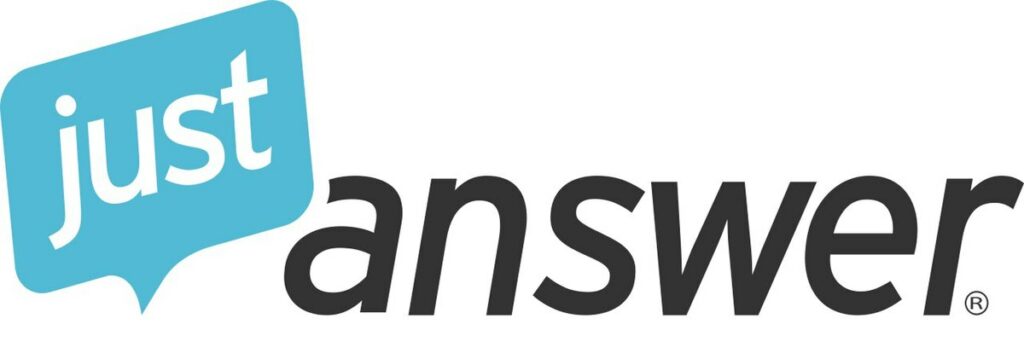Introduction
Are you feeling overwhelmed by the complexity of retirement planning? Don’t worry; you’re not alone! This comprehensive guide is here to simplify the process, helping you navigate the maze of investment strategies, retirement accounts, and financial tools.
Together, we’ll explore key components like Social Security, employer-sponsored plans, and IRAs. So, take a deep breath and get ready to embark on a journey toward a secure and fulfilling retirement. Let’s dive in!
Why is it important to think early of Retirement Planning?
Early preparation is vital for a comfortable and stress-free retirement. By starting early, you can take advantage of compound interest, giving your investments more time to grow. Additionally, planning ahead ensures that you have ample time to adjust your strategy if your financial situation or goals change.
Take it from my personally. I am in my 40’s and I wish I would have just put an extra $100 away every month in my 20’s. I would be in a much better spot than I am now. Don’t worry, I am fine – my point is, could have, should have, would have. Early retirement planning is the key to retiring early! By not putting a couple hundred $ away earlier, I’ve added more years to my life where I have to work…
Understanding Your Retirement Needs
Before diving into specific retirement strategies, it’s important to assess your needs and financial goals. Consider the following factors:
- Lifestyle expectations: What type of retirement do you envision? Will you travel extensively, relocate, or maintain your current lifestyle?
- Healthcare costs: As you age, healthcare expenses may increase. Factor in potential long-term care and medical expenses.
- Inflation: The cost of living will likely rise over time. Make sure your retirement plan accounts for inflation.
- Life expectancy: Longer lifespans mean you’ll need more resources to sustain you throughout retirement.
Key Components of Retirement Planning
A well-rounded retirement plan incorporates various financial tools and strategies. Here are some key components to consider:
Social Security
We’ve covered social security in-depth over here.
Employer-sponsored Retirement Plans
Employer-sponsored plans, such as 401(k), 403(b), and 457 plans, allow you to save pre-tax dollars for retirement, with potential employer matching contributions. Read on below, no worries we’ll go in detail!
Individual Retirement Accounts (IRAs)
IRAs, including Traditional and Roth IRAs, offer tax advantages for retirement savings. They’re particularly useful for those without access to employer-sponsored plans or who want additional retirement savings options. Read on below, no worries we’ll go in detail!
Employer-sponsored Retirement Plans
Employer-sponsored retirement plans offer a convenient and tax-efficient way to save for retirement. These plans allow employees to contribute a portion of their pre-tax income directly from their paycheck, reducing their taxable income and providing an immediate tax benefit. There are several types of employer-sponsored plans, each with its own unique features and benefits:
401(k) Plans
A 401(k) plan is the most common type of employer-sponsored retirement plan in the US. Offered primarily by private sector employers, it allows employees to contribute a percentage of their salary on a pre-tax basis, up to an annual limit set by the IRS. The contributions and any earnings on investments within the plan grow tax-deferred until withdrawal during retirement.
Many employers also offer a matching contribution, where they contribute a certain percentage of the employee’s contributions, up to a specified limit. This “free money” is a significant incentive for employees to participate in the plan and save for retirement.
Some 401(k) plans also offer a Roth option, where contributions are made with after-tax dollars, and qualified withdrawals in retirement are tax-free.
403(b) Plans
Similar to a 401(k), a 403(b) plan is designed for employees of public education institutions, non-profit organizations, and certain religious organizations. Like a 401(k), contributions to a 403(b) plan are made on a pre-tax basis, and earnings grow tax-deferred until withdrawn in retirement.
Employer matching contributions are also common in 403(b) plans, providing an additional incentive to save. Some 403(b) plans offer a Roth option as well, allowing for tax-free withdrawals during retirement.
457 Plans
A 457 plan is another type of employer-sponsored retirement plan, primarily available to state and local government employees and some non-profit organizations. These plans function similarly to 401(k) and 403(b) plans, with pre-tax contributions and tax-deferred growth on earnings.
However, one key difference between a 457 plan and other employer-sponsored plans is the absence of a 10% early withdrawal penalty for distributions made before age 59½. This feature provides added flexibility for participants who may need to access their savings before traditional retirement age.
Simplified Employee Pension (SEP) and Savings Incentive Match Plan for Employees (SIMPLE) IRAs
For small business owners and self-employed individuals, SEP and SIMPLE IRAs offer an alternative to traditional employer-sponsored plans. These plans function similarly to Traditional IRAs but have higher contribution limits and specific rules for employer contributions.
In summary, employer-sponsored retirement plans provide valuable tax benefits and potential employer matching contributions, making them a vital component of a well-rounded retirement strategy. By participating in these plans and taking advantage of available matching contributions, employees can significantly boost their retirement savings and financial security.
Individual Retirement Accounts (IRAs)
Individual Retirement Accounts (IRAs) are tax-advantaged investment vehicles designed to help individuals save for retirement. They are an excellent supplement to employer-sponsored retirement plans or a primary savings option for those without access to such plans. There are several types of IRAs, each with its unique features and benefits:
Traditional IRA
A Traditional IRA allows you to contribute pre-tax dollars, lowering your taxable income for the year in which the contributions are made. The earnings within the account grow tax-deferred, meaning you won’t pay taxes on the gains until you withdraw the funds in retirement. Withdrawals after age 59½ are taxed as ordinary income.
Contributions to a Traditional IRA may be tax-deductible, depending on your income and participation in an employer-sponsored retirement plan. There are annual contribution limits, which the IRS may adjust periodically.
Roth IRA
A Roth IRA is funded with after-tax dollars, meaning you don’t receive a tax deduction for contributions. However, the earnings within the account grow tax-free, and qualified withdrawals during retirement are also tax-free. This feature can be particularly beneficial for those who anticipate being in a higher tax bracket during retirement or who prefer tax diversification.
To contribute to a Roth IRA, your income must fall below certain limits set by the IRS. Like Traditional IRAs, there are annual contribution limits for Roth IRAs.
Rollover IRA
A Rollover IRA is a Traditional IRA specifically designated to receive funds from an employer-sponsored retirement plan, such as a 401(k) or 403(b), when you change jobs or retire. This option allows you to maintain the tax-deferred status of your retirement savings and consolidate accounts for easier management.
Rollover IRAs follow the same rules as Traditional IRAs for contributions, withdrawals, and required minimum distributions (RMDs).
SEP IRA and SIMPLE IRA
As mentioned in the previous section on employer-sponsored plans, SEP and SIMPLE IRAs are designed for small businesses and self-employed individuals. These IRAs have higher contribution limits and unique rules regarding employer contributions.
Inherited IRA
An Inherited IRA, also known as a Beneficiary IRA, is created when you inherit retirement account assets from a deceased individual. This type of IRA has specific rules for distributions and taxes, depending on the relationship between the beneficiary and the original account owner.
In conclusion, Individual Retirement Accounts offer a variety of tax advantages and investment options to help you save for retirement. By understanding the differences between each type of IRA, you can choose the one that best aligns with your financial goals and circumstances.
Investment Strategies
Diversifying your investments, such as stocks, bonds, and mutual funds, can help you grow your retirement savings while managing risk.
Obviously we are not financial advisors, so do your own research. There’s tons of Youtube videos and blog post on the Internet that cover investment strategies in-depth.
Insurance Products
Annuities and life insurance policies can provide guaranteed income and financial protection for you and your loved ones.
As above, do your own research on this topic; a lot of information is online.
Creating Your Retirement Plan
Developing a personalized retirement plan involves several steps:
- Determine your retirement goals: Establish your desired retirement lifestyle and financial objectives.
- Assess your current financial situation: Review your assets, liabilities, and existing retirement accounts.
- Develop a savings strategy: Set a target retirement savings rate and prioritize contributions to tax-advantaged accounts.
- Invest for growth: Diversify your investments to balance risk and reward.
- Revisit and revise: Regularly review and adjust your plan as needed.
Seeking Professional Guidance
Lastly, a financial advisor can provide valuable guidance in creating a retirement plan tailored to your specific needs. They can help you navigate complex financial decisions and optimize your retirement strategy.
However be careful. Make sure to check references, ask around friends and family and compare offers from professionals.
Conclusion
Retirement planning in the US requires careful consideration of your financial goals, investment strategies, and available resources. By starting early, understanding your needs, and incorporating a variety of tools, you can create a plan that provides financial security and peace of mind in your golden years.
Frequently Asked Questions (FAQs)
- What is the best age to start retirement planning? It’s never too early to start planning for retirement. The earlier you begin, the more time you have to save, invest, and take advantage of compound interest.
How much money do I need to retire comfortably? The amount needed for a comfortable retirement varies depending on your lifestyle expectations, life expectancy, and anticipated expenses. A common rule of thumb is to aim for 70-80% of your pre-retirement income annually.
What is the difference between a Traditional IRA and a Roth IRA? A Traditional IRA allows for pre-tax contributions, with taxes being paid upon withdrawal during retirement. Conversely, Roth IRA contributions are made with after-tax dollars, but withdrawals in retirement are tax-free, provided certain conditions are met.
When should I claim Social Security benefits? The optimal time to claim Social Security benefits depends on your personal situation. You can start claiming benefits as early as age 62, but doing so will result in permanently reduced payments. Waiting until your full retirement age (FRA) or even later can increase your monthly benefits.
Can I contribute to both a 401(k) and an IRA? Yes, you can contribute to both a 401(k) and an IRA in the same year. However, there are income limits and contribution limits that apply to each type of account. Be sure to consult IRS guidelines and consider speaking with a financial advisor to optimize your contributions.
| Further Reading: |
|---|
| Demystifying Social Security: Your Roadmap to a Secure Financial Future |
| From Confusion to Clarity: Social Security Disability in the US |
| Source | Link |
|---|---|
| Investopedia | Visit Website |
| U.S. Department of Labor | Visit Website |
| Social Security Administration | Visit Website |










